Artist Faig Ahmed on his "cold heart," carpets and subverting tradition
2015-02-04
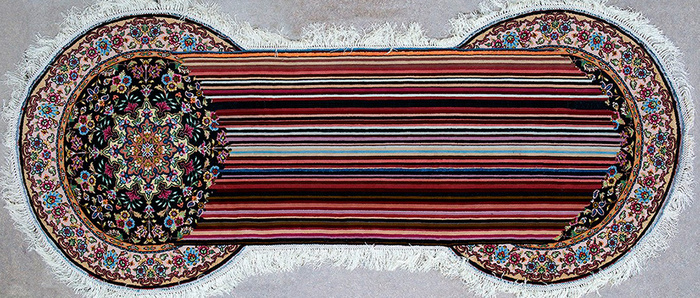
His work is a kind of cultural reclamation – taking an old object of everyday use which is rich in history and transforming it into a new one to be hung in galleries and viewed as an artwork. “The most difficult carpet to work on was the Recycled Tradition carpet," Faig explains.
“It was a difficult period in my life in general, and the carpet probably marked my transition from one condition to another. Initially I wrote a deep theory about recycled culture analysis. It was a typical cold analysis of the theme that I was working on. But what happened next made a great impact on me, and I feel that this became the true and honest concept behind the artwork.”
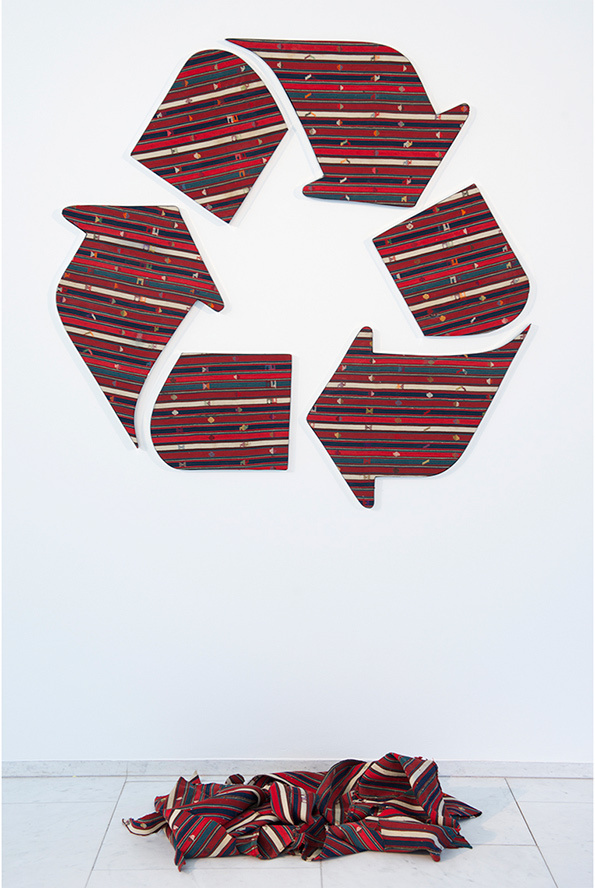 Recycled Tradition carpet
Recycled Tradition carpet
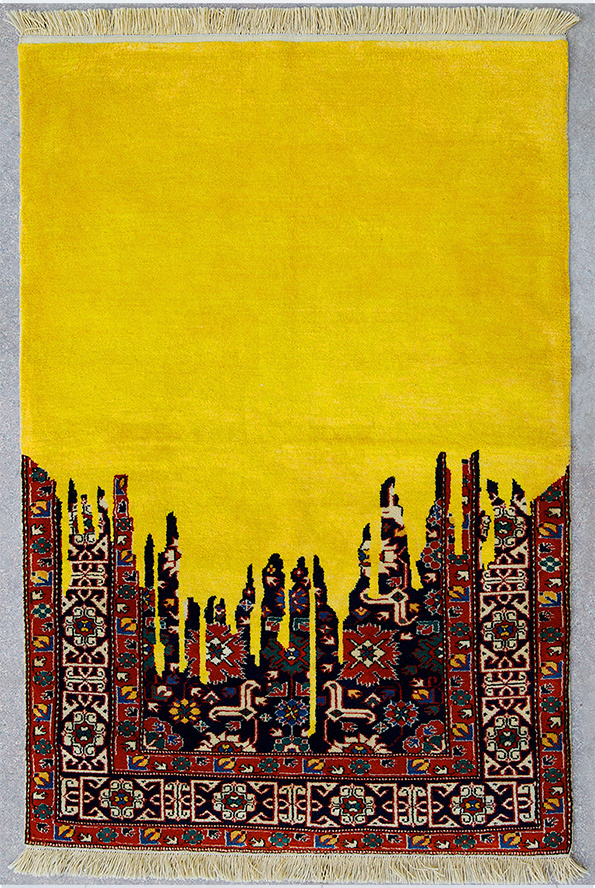
It took four months to track down an appropriate carpet, which needed to be between 150 and 200 years old. Faig has a regular carpet supplier who showed him various options until he came across the perfect fit. “I wanted to start cutting it immediately after leaving the workshop. With my heart cold, I asked him where he got the carpet. And he told me the story.
“Some carpet sellers he knew suggested visiting an old woman in Southern Azerbaijan who had a beautiful old carpet in a perfect condition. But this woman rejected selling it because she had inherited it from her grandmother and it was the only thing she could take with her from her father’s house when she got married. It was a tradition in the old days in Azerbaijan: this woman couldn’t take anything from her home because her parents were against her marriage, and only her grandmother had supported her, giving her this carpet and helping her to run away with her lover. After several visits, and after she found out the carpet would be sold to an artist, she agreed to sell it."
Faig continues: “Later on I found the carpet in a historical book. I read that it was the Garabakh carpet, which is another part of Azerbaijan, and the lady can’t go there anymore, because this territory is occupied by Armenia, where there is a war at the moment. So when I took a cutting knife to cut the carpet, I couldn’t do it.
“Suddenly I realised that I am also a hostage to tradition! This story’s impact on me was so huge that I couldn’t destroy this carpet with my own hands. I passed it onto an art production company to prepare it for me, and I didn’t tell them how old it was. I always thought that my mind was cold, and that I’m totally impersonal – that the tradition is only a part of history. But when you touch it directly it changes. I’ve felt responsibility for everything I do, and now this artwork is a part of the recycled tradition.”
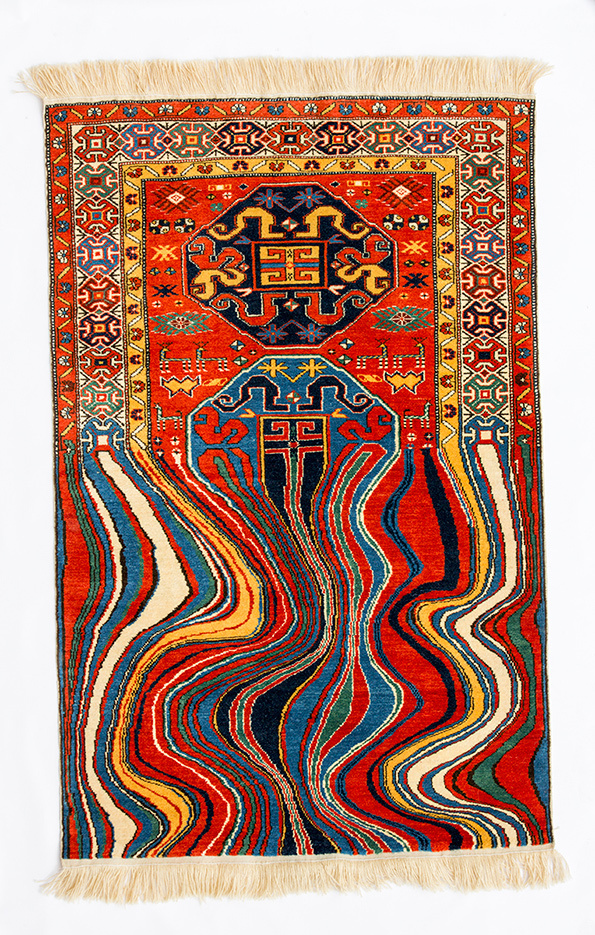
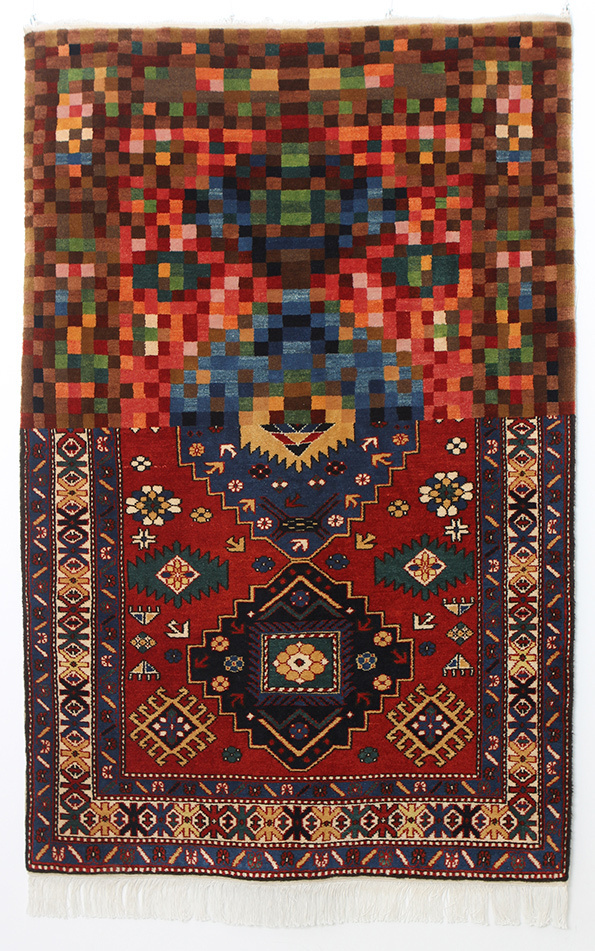
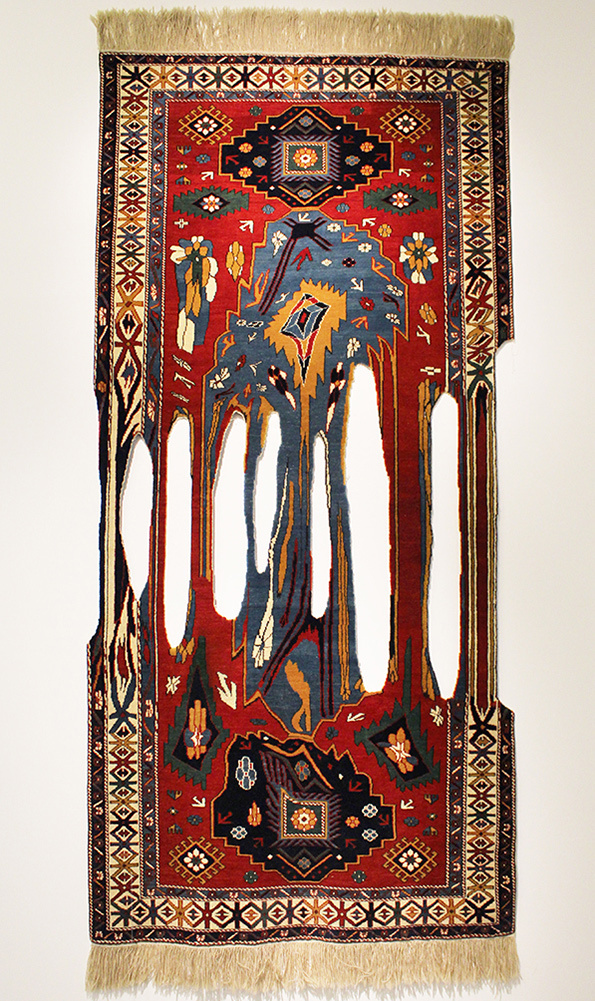
Source itsnicethat.com